Extrude and Extrude Cut Panels
Use the following properties to define the behavior of extrusion features.
| Input Type | Specifies the type of input to extrude. | |
| Sketch | Allows you to use a sketch profile to form an extrusion. | |
| Edges | Allows you to use edges to form an extrusion. | |
| Sketch/Edges For Extrusion | Specifies a sketch or edges to extrude. | |
| Sketch to Extrude Cut | Specifies the sketch to extrude cut. | |
| Body Type | Defines the type of body that results from the operation. | |
| Solid | The resulting body is a closed solid. | |
| Sheet | The resulting body is an open sheet body. | |
| Method | Defines how to set the end-point of the extrusion. | |
| Blind | Extrudes the sketch to the distance that you set in the Distance property. | |
| Through All | Extends the sketch through all bodies, cutting everything in its path. | |
| Up To Face | Extends the sketch to a selected face or its underlying surface. Click the desired face to select it. The face that you select is displayed in the Selected Face property.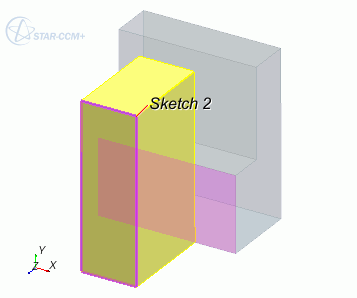 | |
| Up to Body | Extends the sketch up to a selected body. Click the desired body to select it. The body that you select is displayed in the Selected Body property.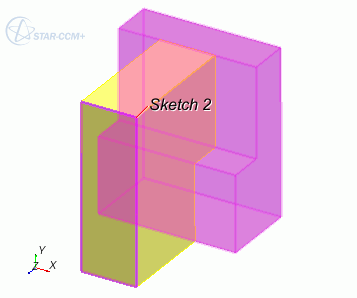 | |
| Beyond Face | Extends the sketch beyond the selected face by the amount that you set in the Offset Distance property.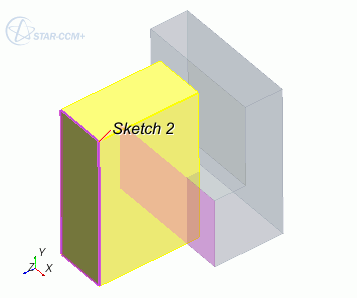 | |
| Through Body First Segment | Extends the sketch to cut through the first segment in the selected body. Click the desired body to select it.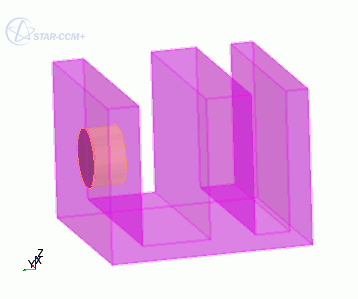 | |
| Up to Plane | Extends the sketch up to a selected plane. Click the desired plane to select it. The plane that you select is displayed in the Target Plane property. 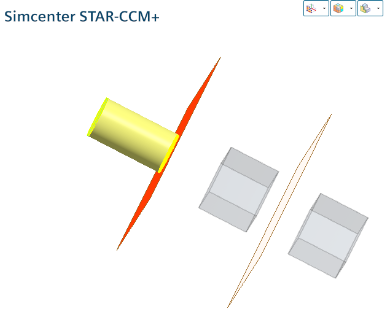 | |
| Direction Type | Specifies the direction of the extrusion. | |
| Normal | Extrudes the sketch in the normal direction. | |
| Reverse | Extrudes the sketch opposite to the normal direction. | |
| Specified | Extrudes the sketch in a custom direction, whose vector components are specified in the Direction Vector property. In the 3D-CAD View scene, you can also click and drag the light blue arrow to change the orientation of the extrusion. | |
| Reference Axis | Extrudes the sketch in the direction of a reference axis. Select an existing reference axis from the 3D-CAD View scene. See Working with Reference Geometry in 3D-CAD. | |
| Direction Vector | Specifies the custom extrusion direction. This property is activated when you set the Direction property to Specified. | |
| X | X component. | |
| Y | Y component. | |
| Z | Z component. | |
| Coordinate System | Specifies the coordinate system that is used in the extrusion operation. | |
| Extrusion Options | Specifies whether the sketch extends in a single direction or both directions. | |
| One Way | Extrudes the sketch in one direction (specified in the Direction parameter). | |
| Two Way Symmetric | Extrudes the sketch the same distance in both directions. | |
| Two Way Asymmetric | Extrudes the sketch in both directions. The extrusion on either side of the sketch can be a different size. This option activates the Asymmetric Distance text box. | |
| Distance | Specifies the length of the extrusion. For blind extrusions, you can set this distance using the interactive arrow in the 3D-CAD View scene. | |
| Asymmetric Distance | Specifies the asymmetric extrusion distance. This option is activated when you set the Extrusion Options property to Two Way Asymmetric. | |
| Offset Distance | Specifies the offset distance of the extrusion from the selected surface. The offset distance is measured from the surface that you select. | |
| Draft | Specifies whether the extrusion has a constant cross-sectional profile along its length, or whether it tapers inwards or expands outwards. In an open sketch, the direction of the draft depends on the order in which you create the points and is arbitrary. You can change the draft direction based on the feature preview in the 3D-CAD view scene. | |
| None | Extrusion has a constant cross-section along the extrusion. | |
| Inward | Extrusion tapers inwards. When applying an inward draft to a concave profile, the profile must not contract to the point where its edges overlap and intersect. Similarly, if the draft splits the original profile into two profiles, the operation fails. | |
| Outward | Extrusion expands outwards. | |
| Angle | Specifies the draft angle (in degrees or radians). This option is activated when you set the Draft property to Inward or Outward. Enter values in the range of -90 to 90 degrees, or to radians. | |
| Body Interaction | Specifies how the solid body that is created by the extrusion interacts with other bodies adjacent to it, as defined by Interacting Bodies. | |
| None | The new body is added to the Bodies manager on its own. No change is made if the body is adjacent to, or overlaps, surrounding bodies. | |
| Merge | The new body is united with any adjacent or overlapping bodies; otherwise it is added on its own to the Bodies manager. | |
| Imprint | The edges of the extruded body are imprinted on any adjacent or overlapping bodies. Part contacts are created when the operation is executed. | |
| Bodies to Interact | Specifies the bodies which interact with the feature. | |
| All | The feature interacts with all contacting bodies. | |
| Selected | The feature interacts with selected bodies only. Click inside the Interacting Bodies group box and select the bodies to interact with from the from the 3D-CAD View scene. These bodies are highlighted in blue. | |
| Bodies to Cut | Specifies the bodies that the feature cuts. | |
| All | The feature cuts all bodies. | |
| Selected | The feature cuts only selected bodies. Click inside the Cut Bodies group box and select the bodies to cut from the 3D-CAD View scene. These bodies are highlighted in blue. | |